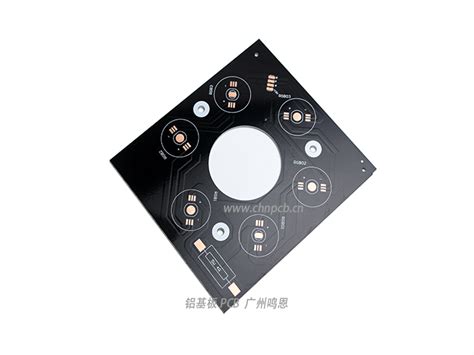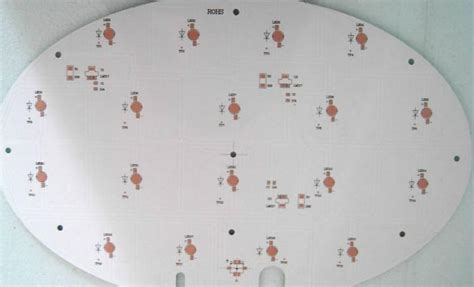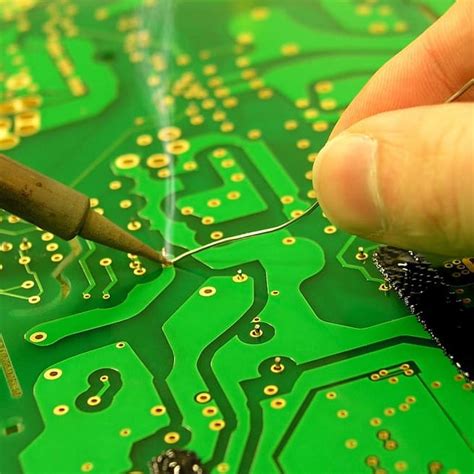Mastering Aluminum PCB Prototyping: A Guide to Innovation
Key Takeaways
When it comes to aluminum PCB prototyping, there are several critical insights that can greatly enhance your approach to electronic design. First and foremost, understanding the pcb manufacturing process is essential; it not only impacts the pcb manufacturing cost but also determines the overall quality and functionality of your final product. As you explore relationships with various pcb manufacturing companies, you may find that they offer innovative solutions tailored to specific project requirements, thereby boosting your competitive edge in the market. Furthermore, optimizing designs for aluminum PCBs will lead to enhanced heat dissipation, a significant advantage in high-performance applications. This is particularly useful for electronics that demand efficient thermal management. Remember, keeping abreast of the latest trends in pcb manufacturing technologies can lead you to discover new techniques that enhance your prototyping process. Adopting these practices will empower you to navigate common challenges effectively, positioning your pcb manufacturing business for growth in a rapidly evolving landscape.
Understanding Aluminum PCB Prototyping: An Overview
Aluminum PCB prototyping represents a significant advancement in the realm of electronic design, offering solutions that traditional materials cannot match. As you delve into this innovative field, you will find that the primary component, aluminum, provides excellent thermal management, making it an ideal choice for applications requiring enhanced heat dissipation. When engaging with PCB manufacturing, it’s crucial to recognize the role of aluminum in addressing common heat-related issues that plague many devices.
The advantages of aluminum PCBs become apparent when you consider their impact on performance, durability, and overall efficiency. In contrast to standard fiberglass-based PCBs, aluminum offers a lower thermal resistance and improved conductivity—key factors when evaluating your options among various PCB manufacturing companies. The cost-effectiveness of your designs can also be optimized through careful planning and by leveraging advanced techniques in PCB manufacturing.
Moreover, understanding the PCB manufacturing cost is vital for establishing a sustainable PCB manufacturing business. When prototyping with aluminum, it’s beneficial to collaborate with experienced manufacturers who specialize in this niche area, ensuring your designs benefit from cutting-edge processes tailored specifically for aluminum substrates.
| Feature | Aluminum PCB | Traditional PCB |
|---|---|---|
| Thermal Conductivity | High | Moderate |
| Weight | Lightweight | Heavier |
| Cost Efficiency (Bulk Orders) | Competitive | Variable |
| Durability | Excellent | Good |
It is essential to keep these factors in mind as you explore the landscape of aluminum PCB prototyping, where innovation meets practicality. With ongoing advancements in this field, evaluating how these components can shake up conventional design paradigms will help you stay ahead in your projects. For further insights on PCB production and services tailored to your needs, Andwin PCB is a resource worth exploring.
Key Advantages of Aluminum PCBs in Electronic Design
When it comes to electronic design, utilizing aluminum PCBs has increasingly gained recognition due to their unique benefits. One of the primary advantages you can leverage is their superior thermal management capabilities. The ability of aluminum to dissipate heat effectively allows your circuit designs to operate at optimal temperatures, thus enhancing the overall performance and longevity of your products. Additionally, compared to other types of PCBs, aluminum boards offer a more robust structure, making them resistant to damage under physical stress. This durability significantly reduces the risk of failure in demanding applications, which can be crucial in sectors such as automotive or aerospace.
Moreover, if you’re considering the financial aspects of your projects, aluminum PCB manufacturing often comes with an appealing cost-benefit ratio. While the initial pcb manufacturing cost may be higher than traditional options, the improved thermal properties and reduced risk of failure can lead to lower overall expenses in maintenance and replacements. By collaborating with reliable pcb manufacturing companies, you can take full advantage of these benefits without compromising on quality.
“Investing in high-quality aluminum PCBs is investing in the future efficiency and reliability of your electronic applications.”
Furthermore, their lightweight characteristic allows for more efficient designs, offering flexibility that traditional boards may not provide. This advancement not only fosters innovation but also aligns perfectly with modern demands for compact solutions. As you explore options for your next projects, consider how integrating aluminum PCBs can confer numerous advantages that enhance both functionality and operational efficiency in your designs.

Best Practices for Designing Aluminum PCBs
When it comes to designing aluminum PCBs, understanding the nuances of the pcb manufacturing process is crucial for achieving optimal performance in your electronic devices. One of the primary best practices is to ensure precise layout design to minimize thermal resistance. This includes placing high-power components close to thermal vias and using adequate copper thickness for effective heat transfer. It’s also important to work closely with pcb manufacturing companies that specialize in aluminum boards, as they can provide valuable insights and standards specific to aluminum substrates.
Moreover, while considering pcb manufacturing cost, opt for designs that streamline the production process without compromising quality; simplicity in design can reduce machining time and costs. Always ensure that your design adheres to industry standards and specifications, as this can significantly affect the reliability of your product in real-world applications.
Utilizing simulation tools during the design phase can also help identify potential hotspots and electromagnetic interference issues early on. Integrating these tools with insights from pcb manufacturing business practices can lead you towards more innovative solutions for heat dissipation, ultimately enhancing performance and longevity of your products. Remember that each detail counts in aluminum PCB prototyping, so focus on robust design principles from the start to pave the way for successful prototyping outcomes.
Techniques for Enhanced Heat Dissipation in Aluminum PCBs
When it comes to aluminum PCB prototyping, understanding effective techniques for heat dissipation is vital for maintaining performance and longevity in your electronic designs. One of the most prominent methods involves optimizing thermal vias. Placing thermal vias strategically allows heat to travel from the surface of the PCB to the base layer, maximizing the heat transfer efficiency. Additionally, incorporating heat sinks and direct thermal paths on your aluminum boards can significantly enhance heat management. You can also consider using surface finishes that improve thermal conductivity; materials such as thermal adhesive or specialized coatings can assist in optimizing the interaction between components and the aluminum substrate.
Another key aspect of heat dissipation techniques pertains to layout design. Ensuring that high-heat generating components, such as voltage regulators or power transistors, are placed in areas with sufficient clearance and airflow can prevent localized overheating. Additionally, a thoughtful layout should minimize trace length between high-current paths and components to reduce resistive heating effects.
As you delve into your pcb manufacturing processes, choose reputable pcb manufacturing companies that prioritize innovative techniques in their offerings. Not only do they understand the critical balance between cost efficiency and quality—often reflected in their competitive pcb manufacturing cost—but they also employ advanced technologies that facilitate superior thermal management solutions in their pcb manufacturing business practices. By focusing on these enhancements, you position your designs for superior reliability and performance under demanding conditions.

Common Challenges in Aluminum PCB Prototyping and Solutions
When delving into aluminum PCB prototyping, you may encounter several common challenges that can impact the efficiency and cost-effectiveness of your projects. One significant hurdle is the pcb manufacturing cost, which can escalate if you do not choose the right pcb manufacturing companies. To mitigate this expense, consider reaching out to multiple suppliers to obtain competitive quotes while ensuring they maintain quality standards. Another issue is thermal management; aluminum PCBs are favored for their excellent heat dissipation properties, but achieving optimal performance requires thoughtful design considerations. Failing to account for thermal expansion or inadequate heat sink integration can lead to component failure. Solutions such as using thermal vias or selecting appropriate materials can enhance the heat dissipation capabilities of your design.
Moreover, the pcb manufacturing business often faces challenges with the accuracy and precision of etching processes during prototyping. Ensure that your design files are meticulously detailed and that you’re working closely with manufacturers who use advanced technologies to minimize errors in production. Regularly revisiting and updating your design files can also help align with the latest standards in electronic design, making your designs not only more efficient but also more reliable. By addressing these challenges proactively, you can streamline your aluminum PCB prototyping process and deliver exceptional results in your projects.
Innovations in Aluminum PCB Manufacturing Technologies
The landscape of aluminum PCB manufacturing is rapidly evolving, thanks to cutting-edge technologies designed to address the complexities associated with high-performance electronic designs. As you explore this sphere, consider how advancements in manufacturing techniques can significantly impact pcb manufacturing costs and enhance overall efficiency. For instance, improved printed circuit board (PCB) fabrication processes have emerged, allowing for greater precision and faster turnaround times. This is particularly beneficial for pcb manufacturing companies that aim to meet the growing demand for innovative designs while maintaining cost-effectiveness. Additionally, novel methods such as laser machining and advanced surface treatment are now used to refine thermal management, ensuring optimal heat dissipation which is crucial for ensuring the reliability and longevity of your electronic products. Transitioning to these modern practices not only elevates your design capabilities but also positions your pcb manufacturing business as a leader in an increasingly competitive market. Embracing these innovations equips you with the tools necessary for delivering high-quality aluminum PCBs that meet the stringent requirements of today’s technology-driven landscape, ultimately leading to improved performance and customer satisfaction.
Real-World Applications of Aluminum PCBs
Aluminum PCBs have gained significant traction across various industries due to their remarkable properties, especially when it comes to thermal management and durability. In the automotive sector, for instance, these boards are critical in enhancing the performance of headlights and control systems, where heat dissipation is paramount. By utilizing aluminum PCB manufacturing, manufacturers can create designs that maintain operational efficiency even under high-stress conditions.
In the realm of consumer electronics, devices like LED lighting systems and power supplies leverage the thermal conductivity of aluminum PCBs to optimize their performance and longevity. This results in not only superior functionality but also lower pcb manufacturing costs during the production process as various components can be integrated into a single unit.
Furthermore, in medical devices, where reliability is crucial, aluminum PCBs provide a robust solution for diagnostic equipment and imaging devices, ensuring they perform accurately while efficiently managing heat generated during operation. The adaptability of these boards leads many pcb manufacturing companies to innovate their product lines, showcasing expanding capabilities.
As you explore applications across different sectors, consider how these advancements in aluminum PCB prototyping can enhance your designs while addressing various challenges inherent in conventional printed circuit boards. This multifaceted approach underscores why the pcb manufacturing business is increasingly shifting towards this highly efficient option.

Future Trends in Aluminum PCB Prototyping and Design
As the demand for more efficient and versatile electronic components continues to rise, the future of aluminum PCB prototyping is poised for significant evolution. One of the key trends to watch is the advancement of automated processes in PCB manufacturing, which streamlines production and minimizes costs. You may find that integrating automation not only reduces the PCB manufacturing cost but also enhances precision, allowing for more detailed designs with better thermal management properties. Additionally, with an increasing focus on sustainability, many PCB manufacturing companies are exploring eco-friendly materials and techniques that minimize waste while maximizing performance.
Furthermore, innovations in materials science are leading to the development of lighter yet sturdier substrates that can complement aluminum’s conductive properties. This enables designers like you to create products that are not just efficient but also highly functional across various applications. Another notable trend is the shift towards a more collaborative landscape among PCB manufacturing businesses, fostering partnerships that leverage expertise in different areas of technology. As you delve into these emerging trends, it becomes clear that embracing these changes will not only enhance your designs but also position you favorably in an increasingly competitive market.
Conclusion
In summary, as you delve into the realm of aluminum PCB prototyping, you uncover various key aspects that can significantly influence the performance and efficiency of your electronic designs. One of the primary benefits of using aluminum in PCB manufacturing is the remarkable improvement in heat dissipation, which is crucial for ensuring longevity and reliability in your projects. By collaborating with reputable PCB manufacturing companies, you can access advanced techniques that enhance this thermal management—ultimately leading to better performance under demanding conditions.
When considering cost-effectiveness, it’s important to evaluate the PCB manufacturing cost in relation to the advantages gained through aluminum PCBs. While initial costs may be higher than traditional materials, the long-term savings from reduced failures and enhanced durability often justify the investment.
Engaging with a robust PCB manufacturing business that specializes in aluminum prototyping can also facilitate access to innovative technologies currently reshaping the industry. As you navigate through these options, your understanding of best practices will empower you to make informed decisions, thereby maximizing both performance and cost efficiency in your electronic designs. This strategic approach ultimately ensures that you remain at the forefront of technology in a competitive market, positioning your projects for success and sustainability.
FAQs
What are Aluminum PCBs and why are they used?
Aluminum PCBs are printed circuit boards made from an aluminum substrate that offers excellent thermal management. These boards are favored in high-power applications due to their ability to dissipate heat efficiently, thereby enhancing the overall performance of your electronic devices.
How does aluminum PCB prototyping differ from traditional PCB manufacturing?
The main difference lies in the heat dissipation properties. While traditional PCBs primarily use fiberglass substrates, aluminum PCB prototyping allows for better handling of high temperatures and is often more suited for applications requiring rapid heat removal and improved reliability.
What is the pcb manufacturing cost for aluminum PCBs compared to standard PCBs?
Typically, the pcb manufacturing cost for aluminum PCBs can be higher than standard FR4 boards due to the material costs and specialized equipment needed for processing. However, considering the long-term benefits of increased performance and longevity, many find it a worthwhile investment.
Are there specific pcb manufacturing companies that specialize in aluminum PCB prototyping?
Yes, there are numerous pcb manufacturing companies with specific expertise in aluminum PCB prototyping. It’s essential to choose a company that has a track record in handling thermal management solutions effectively.
What should you consider when selecting a pcb manufacturing business?
When selecting a pcb manufacturing business, consider their experience with aluminum materials, their capability to meet your design specifications, turnaround time, and customer support. It’s crucial that they have established processes for quality assurance throughout production.







